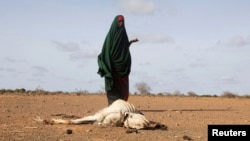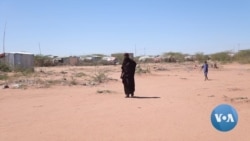U.N. agencies are calling for more spending to help Somalia strengthen its resilience against future climate effects and ward off crises such as the current famine-inducing drought.
A looming famine in Somalia, brought on by the longest drought in 40 years, is destroying livelihoods and threatening to kill many of the 7.1 million people facing acute hunger.
A significant increase in humanitarian aid from U.N. agencies and the international community in response to the crisis so far has prevented the worst from happening.
El-Khidir Daloum is World Food Program country director for Somalia. Speaking in the capital, Mogadishu, he says humanitarian aid alone will not be enough to keep Somalia from lurching from one crisis to another.
“We must also continue to invest in recovery and in long term, sustainable solutions, under the leadership of the government of Somalia, to protect Somalis against future climate shocks. The current drought, it is unusually long, but it is not an isolated incident in a country on the front lines of the climate change,” he said.
Daloum says the WFP alone has scaled up its life saving operation in Somalia and is delivering food and nutrition to nearly five million of the most vulnerable people. He says the WFP also is working with the Food and Agriculture Organization and UNICEF on joint resilience programs to strengthen long term food security support.
FAO representative in Somalia Etienne Peterschmitt says his agency has provided cash assistance to more than 700,000 people, as well as agricultural help such as seeds, feed and fertilizer and other aid to more than 45,000 people.
“Having said that and while humanitarians focus on saving lives and averting famine, there is also a critical need to invest in livelihoods, resilience, infrastructure development, climate adaptation and durable solutions to ensure those affected can recover from the ongoing crisis, adapt, and thrive in the future,” he said.
U.N. officials agree action must be taken to help communities meet their immediate emergency needs. At the same time, however, they say communities must adapt their livelihoods in the face of a changing climate so they are prepared for whatever the future will bring.











